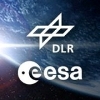
End: 30/12/2013
Funding: European, Industrial
Status: Completed
Array and Multi-Sensor Processing (A&MSP)
Acronym: ESANGW
Objectives
The goal of this activity is to design enhanced waveforms to be used by the forward and return links of next generation broadband and narrowband satellite networks, together with the associated estimates in terms of system performance improvements and high level complexity.
The purpose of this activity is to study, analyse and simulate new advanced techniques at physical and upper layers (these latter only to support the new devised physical layer techniques) for the forward and return link of future satellite networks, targeting the consumer and professional fixed and mobile terminal market. The goal is to increase the spectral and energy efficiency of the currently used solutions, enable higher data rates for the same link availability, with the end result of increasing the overall competitiveness of the satellite networks. The performance of such techniques shall be thoroughly investigated by means of analysis and computer simulations and their benefits at system level also estimated together with their expected complexity.
Features
The consortium is organised into two Research Groups (RG) which will carry out parallel investigations during the first phase of the project, namely:
- RG1 (DLR, Uni-Bologna, Uni-Parma and PoliTo) will focus on the FWD link of a fixed/mobile broadband system in Ku/Ka-band.
- RG2 (DLR, CTTC, Uni-Vigo and Uni-Luxembourg) will focus on the FWD and RTN Links of mobile Interactive syste, in L/S-band.
Project Plan
Task 1: Investigation of the Air Interface Enhancements (ongoing).
Task 2: Definition and Assessment of the New Air Interface (not started).
Task 3: System Performance Assessment and Technology Roadmap (not started).
Challenges
RG1 is currently investigating the following techniques:
- Time and Frequency Packing
- FEC Optimisation (for channels with ISI)
- Constant Physical Layer Framing
- Pre-coding with “user-clustering”
- Interference Cancellation / Multi-User Detection at the Receiver
- Higher Order Modulation Schemes
RG2 is currently investigating the following techniques:
- FWD Link Adaptive Transmission
- FWD Link Receiver Equalisation
- Pre-Distortion at the User Terminal
- Random Access Channel Optimisation
- RTN Link Multi-User Detection at the Receiver for DAMA
- FWD and RTN Link FEC Optimisation
Benefits
Based on the achieved or expected performance improvements, the results of the study will be used to define a roadmap within the ARTES program for the development (including validation) of the corresponding technologies and products.
